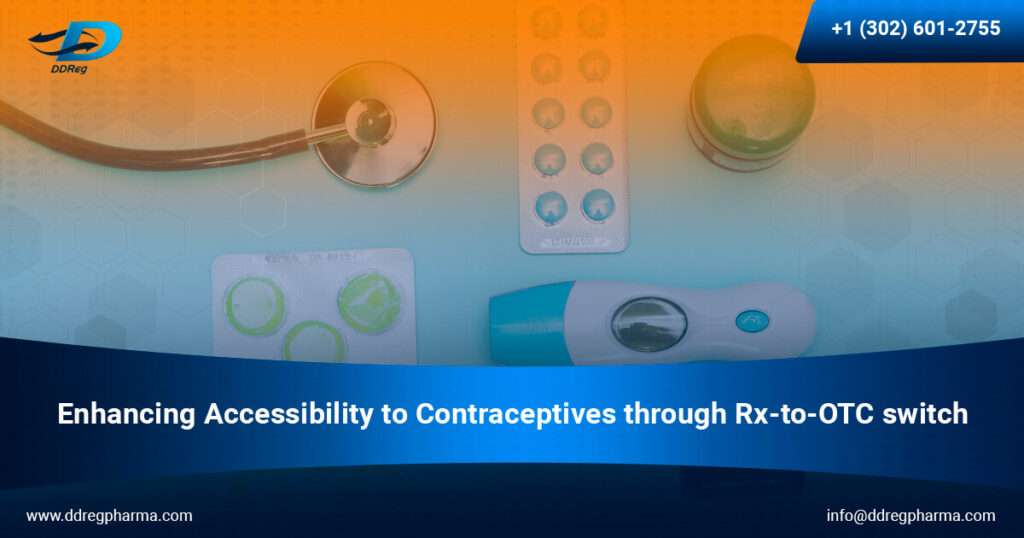In a world where women’s health and autonomy are of utmost importance, ensuring diverse and accessible contraceptive options has become a pressing priority. In response to evolving societal demands, the call for inclusive and non-prescriptive contraceptive solutions has emerged, allowing individuals to take control of their reproductive health, irrespective of their background or circumstances. The role of regulatory agencies in facilitating timely access to these medications is important to safeguard public health. Indeed, the US FDA’s approval for the first ever non-prescription contraceptive marks a significant breakthrough in contraceptive accessibility.
FDA’s Landmark Approval of the progestin-only daily contraceptive
This ground-breaking decision allows the progestin-only daily contraceptive to be obtained without a prescription in the United States enabling individuals to conveniently purchase it at retail stores and online.
The approval of the non-prescription contraceptive is rooted in its well-established contraceptive efficacy, demonstrated since its initial approval for prescription use in 1973. To gain non-prescription approval, the manufacturer of the contraceptive applied for a Rx-to-OTC switch by providing compelling evidence through studies that consumers can safely and effectively use the contraceptive by following the information provided on its Drug Facts label, without the need for assistance from a healthcare professional.
Understanding Rx-to-OTC Switches
The regulatory process that allows prescription drugs to become non-prescription, over-the-counter (OTC) products is known as an Rx-to-OTC switch. Sponsors must demonstrate the safety and efficacy of the drug for non-prescription use.
Types of Rx-to-OTC Switches
The 2 types of Rx-to-OTC switches are described by the US FDA as:
- Full Switch: a sponsor switches the drug under the New Drug Application (NDA) to non-prescription marketing status in its entirety. A sponsor must submit an efficacy supplement to an already approved NDA or a 505(b) (2) application. Once the full switch is complete, the drug is then available as a non-prescription drug.
- Partial Switch: a sponsor can partially switch some of the conditions of use to a non-prescription status while retaining other conditions as part of the prescription status. A sponsor must submit a new NDA after which the drug will be available as a prescription drug for certain conditions of use, and non-prescription drug for other conditions.
Data Needed to Facilitate an Rx-to-OTC Transition
In order to obtain approval for the Rx-to-OTC switch status, the sponsor’s application or efficacy supplement should encompass both efficacy and safety data. This data should demonstrate the drug’s safe utilization in a non-prescription environment. The process may involve conducting new randomized, controlled clinical trials, and incorporating data from the original NDA for the prescription drug.
Furthermore, the sponsor must furnish evidence that consumers can sufficiently comprehend how to use the drug safely and effectively without the need for supervision by a healthcare professional.
FDA Approval of an Rx-to-OTC Switch
The FDA grants approval for an Rx-to-OTC switch when it determines that the drug’s previous prescription status is unnecessary for public health protection due to its safety and potential harmful effects as per the 21 CFR 310.200 (b) whereby “Any drug limited to prescription use under section 503(b)(1)(B) of the act shall be exempted from prescription-dispensing requirements when the Commissioner finds such requirements are not necessary for the protection of the public health by reason of the drug’s toxicity or other potentiality for harmful effect, or the method of its use, or the collateral measures necessary to its use, and he finds that the drug is safe and effective for use in self-medication as directed in proposed labelling.” The decision is made after a comprehensive assessment of the efficacy and safety data presented by the sponsor.
The availability of non-prescription contraceptives has the potential to break down barriers to access and significantly reduce unintended pregnancies. With nearly half of the 6.1 million pregnancies in the U.S. being unintended each year, this option could positively impact perinatal and maternal outcomes by decreasing the risks associated with unintended pregnancies.
Conclusion
The thorough evaluation process undertaken by the FDA guarantees that drugs approved for non-prescription use are safe and effective for self-medication, thereby expanding access to essential healthcare products for the general public. As we move forward, the availability of diverse, non-prescriptive contraceptives will continue to play a pivotal role in empowering individuals to make informed choices about their reproductive health and contribute to a more empowered, healthy, and equal society for all.
DDReg has supported its customers in status switches from prescription to OTCs in multiple regions. The team has experience in developing robust and comprehensive regulatory strategies, safety rationale, and documentation to support legal switches to facilitate rapid and wider market access.
References ad Further Reading
- US FDA. FDA Approves First Nonprescription Daily Oral Contraceptive. United States Food and Drug Administration. 2023
- US FDA. Prescription-to-Nonprescription (Rx-to-OTC) Switches. United States Food and Drug Administration. 2023

